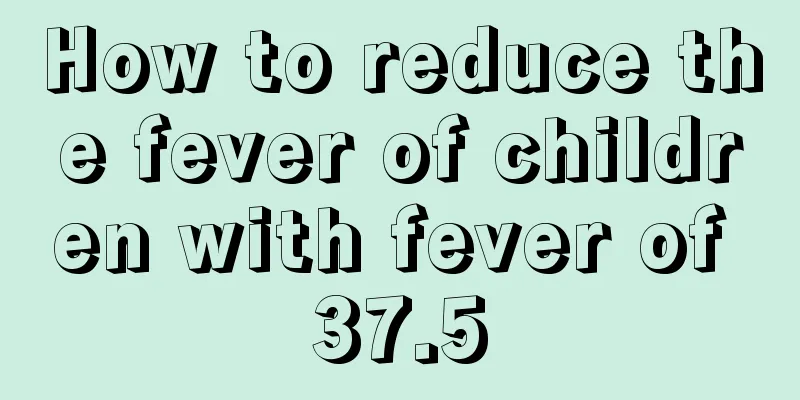Symptoms of intestinal spasms, do these mothers know?

|
Intestinal spasms are more likely to occur in children, and the symptoms are more obvious. Sometimes there is sudden abdominal pain, which may last for several minutes or dozens of minutes, and come and go; sometimes it recurs and may last for several days; younger children may also experience colic in the abdominal area under the xiphoid process. 1. Symptoms of intestinal spasms in children (1) Children who are normally healthy: If they suddenly develop paroxysmal, intermittent abdominal pain and no abnormal physical signs are found during the intervals, this is the main feature of this disease. The abdominal pain in children can last for several minutes or even dozens of minutes, coming and going. After repeated attacks for tens of minutes or hours, the abdominal pain may no longer occur. (2) Some children suffer from recurrent abdominal pain, which may last for several days. The severity of the pain varies. In severe cases, the child may roll over on the ground. In typical cases, the abdominal pain is often mainly located around the navel, that is, the spasm occurs in the small intestine. When spasm occurs in the proximal large intestine, the pain is in the right lower abdomen; when spasm occurs in the distal large intestine, pain occurs in the left lower abdomen; if the child has abdominal pain before defecation, it may be spasm of the descending colon or sigmoid colon. (3) A small number of older children may experience colic in the ribs, usually on one side, due to spasm of the hepatic flexure or splenic flexure of the colon. Younger children may also experience colic in the abdominal area below the xiphoid process, due to spasm of the stomach. Strictly speaking, this is not intestinal spasm but gastric spasm. However, because the mechanism of their occurrence is similar, massage treatment for intestinal spasm is also effective. 2. Prevention of intestinal spasms in children 1. Breastfeeding mothers should eat less foods that cause bloating, such as milk, apples, melons, etc. If a breastfeeding mother eats food that causes bloating, the child will also suffer from bloating after drinking the mother's milk, so breastfeeding mothers should pay attention. 2. Massage your baby's belly in a clockwise direction more often. You can also gently massage your baby when he cries to prevent intestinal cramps. 3. When the child is crying, you can use a hot water bottle for hot compress, but be careful not to set the temperature too high. You can also rub your hands and press on the baby's belly for hot compress; 4. Try not to let your baby cry, because when crying he will inhale air, causing bloating and intestinal cramps. 5. Do not give your baby a pacifier unless there is a special need, as it will cause the baby to inhale air and cause bloating. 6. After feeding, be sure to pat the baby's back more to help him spit out the air he has swallowed. Avoid intestinal spasms. 7. Feed the baby on schedule. A 2-month-old baby should feed about once every 3 hours, and a baby over 3 months old should feed about once every 4 hours. If the baby cries for food in between, feed him water. Regular eating is good for the recovery of intestinal function. |
<<: What's wrong with children's blue eyes? These are the main reasons
>>: What to do with hydrocele in children? Must-read knowledge for mothers
Recommend
Children's sun protection medicine
During the growth of their children, many mothers...
Popliteal cyst surgery
Popliteal cysts usually occur in children. This t...
Why does a newborn baby have diarrhea?
Nowadays, every child is the treasure of the fami...
The child keeps moving his hands and feet while sleeping
Parents will definitely find a problem about thei...
What is the best way to treat children's prickly heat?
The weather is hot in the summer, and a little ex...
What causes knee pain in children?
When people talk about knee pain and back pain, t...
Nursing methods for children with bronchiolitis pneumonia
Bronchiolitis pneumonia in children is a very com...
Causes of eczema in children
Children are the most precious treasures in the e...
What should we do if children have amblyopia or strabismus?
Parents are very worried if their children have s...
What to do if your baby is allergic to mango
If a baby is allergic to mangoes, he or she will ...
What causes motion sickness in children?
More and more people like to travel with their fa...
What are the nutritious meals for babies?
Feeding a baby is a job that requires thinking, b...
6-year-old has arm pain after vaccination
After giving babies vaccinations, some adverse sy...
Is it good for children to use millet pillows?
Sleep quality is an issue that people attach grea...
Why does my baby's mouth smell bad?
Some babies rely on milk powder as their main foo...









